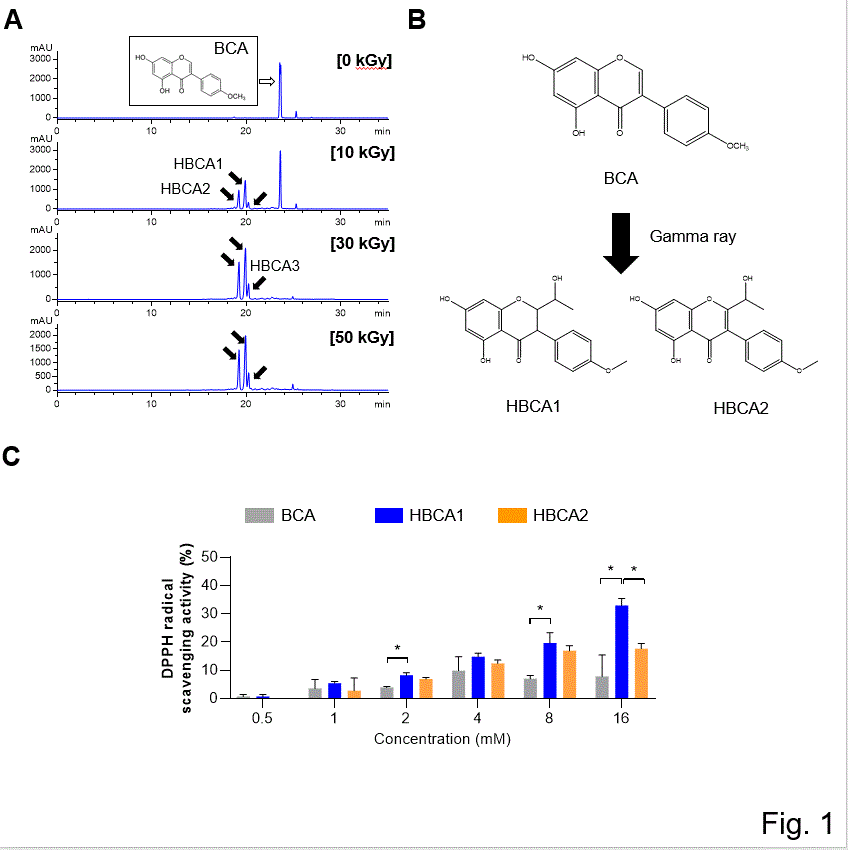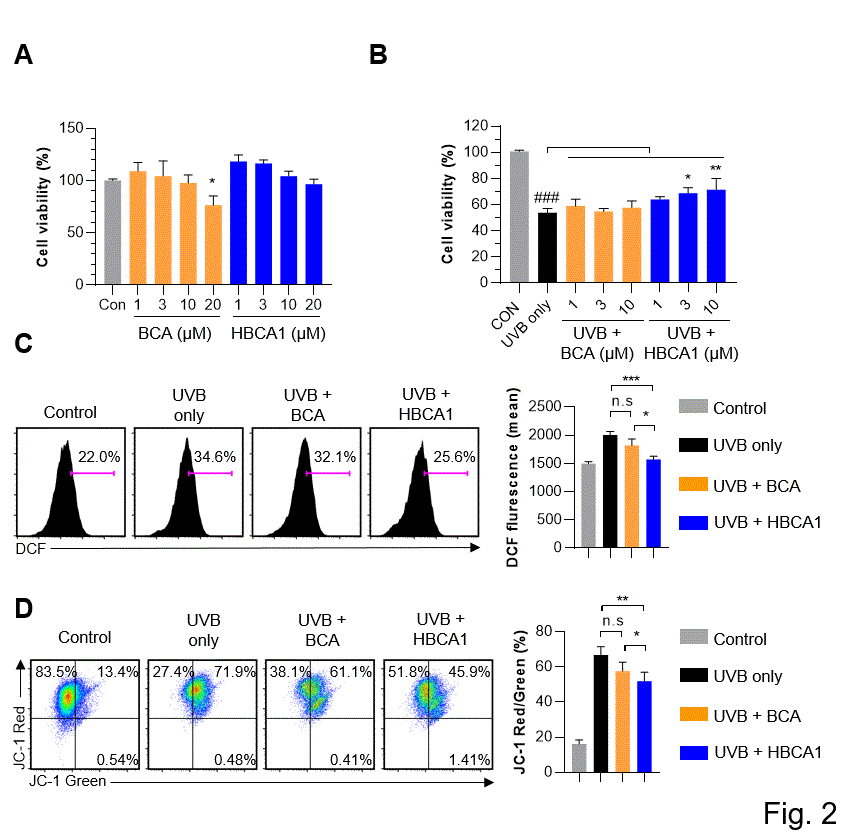Gamma-irradiated isoflavone from Triflolium pratense improves antioxidant activity in UVB-exposed HaCaT cells
Eui-Baek Byun1, Ha-Yeon Song1, Ho Seong Seo1, JeongMoo Han1, Eui-Hong Byun2.
1Radiation Research Division, Korea Atomic Energy Research Institute, Jeongeup, Korea; 2Department of Food Science and Technology, Kongju National University, Yesan, Korea
Introduction with objectives: Ionizing radiation is a powerful tool to modify physicochemical and biological properties of natural compounds for pharmaceutical and nutraceutical application. Here, we investigated whether gamma ray improve water solubility and antioxidant activity of BCA, a phytoestrogenic isoflavone of red clover (Triflolium pratense).
Body: Gamma ray produced hydroxyethyl derivatives (HBCA1 and HBCA2) from BCA ethanolic solution at 50 kGy. Both HBCA1 and HBCA2 showed the increased 2,2-diphenyl-1-picrylhydrazyl (DPPH) radical scavenging activity than original BCA. Furthermore, HBCA1 protected human epidermal keratinocytes (HaCaT) more efficiently than original BCA from ultraviolet B (UVB)-induced cell death by reducing reactive oxygen species production and mitochondrial membrane potential loss.
Conclusion: These results suggest that HBCA1, which is produced by gamma irradiation from BCA, could be used as antioxidant agents. Taken together, our findings suggest that structural modification using gamma ray could be a promising strategy for drug discovery.
Reference: Song, Ha-Yeon, et al. "Ionizing radiation technology to improve the physicochemical and biological properties of natural compounds by molecular modification: A review." Radiation Physics and Chemistry (2022): 110013.
Blois, Marsden S. "Antioxidant determinations by the use of a stable free radical." Nature 181.4617 (1958): 1199-1200.

